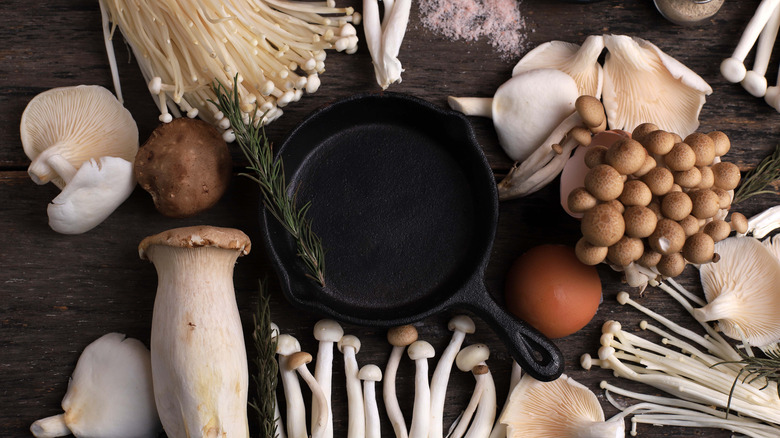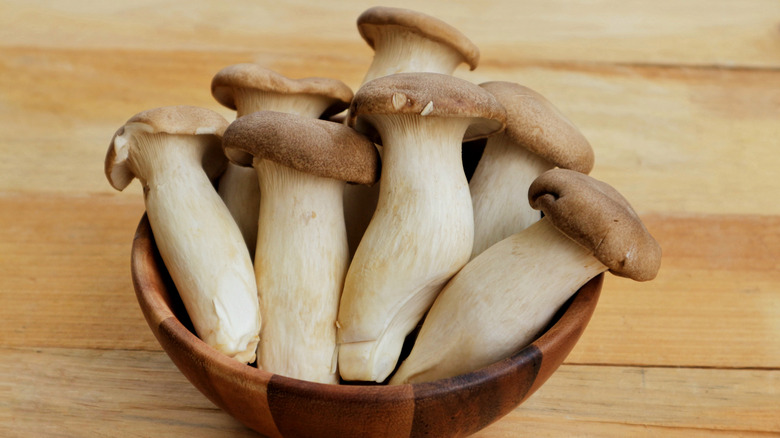What Are Trumpet Mushrooms And What Do They Taste Like?
Mushrooms come in all shapes and sizes and overall, there are over 10,000 known types of this fungus, according to Mushroom Appreciation. No, you can't eat them all! They are incredibly popular due to their versatility in dishes and savory flavor. Some of the most popular to cook with include portobello mushrooms, white button mushrooms, and shiitake mushrooms, Epicurious says.
Mushrooms are used for all kinds of dishes where their uniquely savory flavors shine. Things like pasta, soup, and omelets are favorites for this scrumptious fungus you should have in your home. They can even be used as a substitute for meat! However, while they may taste similar to some meats, mushrooms won't give you protein, so be sure to supplement a mushroom course with something protein-rich like beans or quinoa (via The Cookful).
One popular type of mushroom, in particular, are trumpet mushrooms, also known as king oyster mushrooms. With their distinctive height, they really stand out amongst the mushroom crowd (via MasterClass). The thick white stem and brown top give them also offer up a gorgeous main dish.
Trumpet mushrooms have taste and texture galore
Trumpet mushrooms are much more than an added ingredient in any recipe. In fact, they can be a show-stopping main course. MasterClass says these mushrooms are easily used as a meat substitute, thanks to the substantial stem. Due to this thickness and texture, they hold up especially well when seared or grilled (via Kitchn). That said, these larger-than-life mushrooms don't tend to add as much flavor when raw. However, when cooked, they produce a wonderfully savory umami flavor.
If you want a quick midday snack, you can simply toss raw trumpet mushrooms into a salad or dip them into your favorite dressing (via MasterClass). After searing or grilling, you can use a fork to pull trumpet mushrooms apart, dress them with sauce, and put it all on a brioche bun for a vegetarian take on the pulled pork sandwich. Ultimately, you have the option to make these versatile fungi into nearly whatever you want!
You can find these at most supermarkets, while your local Asian grocer will most likely have them in stock year-round, too. After picking the best of the bunch, be sure to clean off any dirt prior to cooking and cut off the bottom of the stem (via MasterClass). It also doesn't hurt to wash them, according to foodie luminaries like Alton Brown. With multiple ways to cook, flavor, and eat, these are bound to become a new regular in your kitchen lineup.

